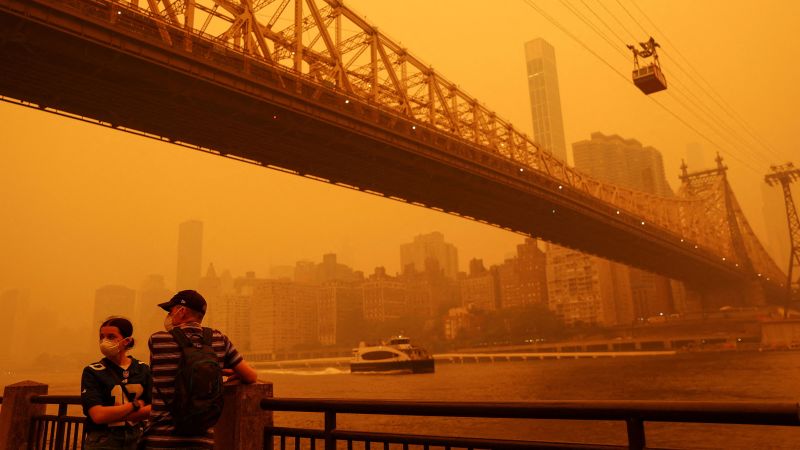What we saw unfold along the Eastern Seaboard last week was surreal. The smoke-filled skies across the skyline of Big Apple and the nation’s capital, professional sporting events being postponed.
It was like something out of a movie. But just because the smoke has mostly cleared for now doesn’t mean those apocalyptic scenes won’t be back later in the summer.
Canada’s fire season is just getting going and with more fires burning out of control, it could be a summer of smoke.
“It’s likely we’re going to see a particularly bad air quality for the rest of the fire season compared to what we’re used to,” Quinn Barber, fire science analyst with the Canadian Forest Service told me Friday on the phone. “And that goes for Canada, and for those unfortunate enough to be downwind of us, the Eastern Seaboard.”
I think what happened last week opened the eyes of many who realized for the first time what effects such fires can have on the West each year.
And it also opened our eyes to how far-reaching the effects from wildfires can be felt. Yet no one is feeling it more than Canada.
“The map of fires looks like chickenpox,” Barber said. “It’s just covered in perhaps 50 fires, 30 of which happened in the last day.”
As of a week ago, Canada had more people evacuated from their homes because of wildfires than ever before in a fire season, according to Barber.
He said it results in thousands of hospitalizations and hundreds of premature deaths each year.
With this year’s fire season off the charts, the numbers could increase. And sadly, it’s only June. Fire season has at least three more months to go.
“We’re at over 4.5 million hectares (11 million acres) burned, which means this is the most area burned we’ve had in ever for a spring fire season,” Barber explained.
Canada’s hot and dry conditions over the last few months primed the forest to burn in unprecedented ways.
Lightning from spring storms moving across the country started as many as 100 new fires a day, according to Barber. It has resulted in this year’s fires burning in unprecedented ways.
“No matter how many people no matter how many water bombers, you can’t stop that many fires at once,” said Barber. “There’s nothing you can do to stop them, except to wait for them to slow down or turn.”
Many of the fires that started in Quebec were in incredibly rural areas, far away from roads or points of access, making it impossible to put them out.
“In some ways, they’re good for the forest, the forest is adapted for them. But humans are not,” Barber said. “Living up there means we have to get used to these sorts of events and do our best to be prepared for them.”
It could become our new normal. Smoke-filled summer skies and poor air quality during the months we are meant to be outdoors.
“Perhaps those areas closest to the fire are the worst. But we’re all impacted, millions of people,” Barber said.
Smoke forecast
This week’s smoke forecast looks better. The air quality across the East Coast has vastly improved compared to last week.
Rain chances will stay in the forecast for the Northeast and parts of New England this week, which will help improve air quality even further.
There is also significant rain forecast across eastern sections of Canada, which will help air quality and help firefighters extinguish the roughly 130 active wildfires currently burning across Quebec.
However, the smoke could return in the weeks ahead as wildfire season continues across Canada.






